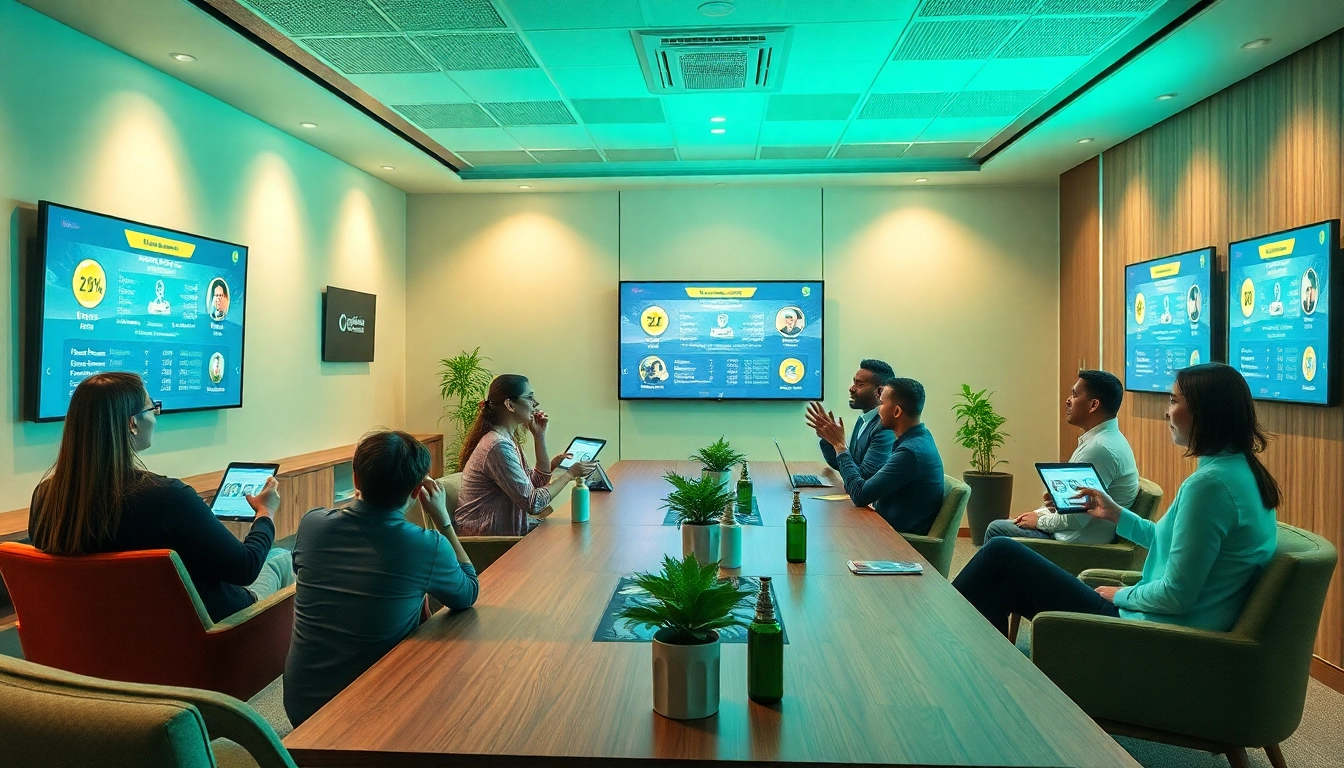Essential Insights on Business Gamification: 5 Proven Strategies for 2025

Understanding Business Gamification
What is Business Gamification?
Business gamification is the process of incorporating game-like elements into business activities to enhance engagement, motivation, and ultimately performance. This practice leverages game design mechanics such as points, badges, challenges, and feedback to transform mundane tasks into engaging, interactive experiences. According to a recent business gamification report, organizations that effectively implement gamification strategies see significant improvements in employee involvement and customer interaction.
The Importance of Gamification in Business
In today’s highly competitive market, traditional methods of engagement often fall short. Gamification provides businesses with a powerful tool to boost productivity and foster collaboration. By integrating game mechanics into work processes, organizations can create a more vibrant work culture that motivates employees to perform their best. Additionally, research has shown that gamified environments lead to higher retention rates and improved customer loyalty, ultimately translating into higher revenues.
Key Mechanics Used in Business Gamification
Various mechanics underpin successful gamification strategies. These include:
- Points: A fundamental element where users earn points for completing tasks, encouraging continuous participation.
- Leaderboards: Displaying rankings fosters competition and inspires employees to improve their performance.
- Achievements: Badges or rewards are given for reaching significant milestones, providing recognition and a sense of accomplishment.
- Challenges: Tasks or missions that are structured to be completed within a set timeframe enhance engagement through urgency and excitement.
Benefits of Implementing Business Gamification
How Business Gamification Enhances Employee Engagement
One of the primary benefits of gamification is its capacity to enhance employee engagement. By making work more enjoyable through game-like interactions, employees are driven to participate actively in their roles. Traditional engagement strategies may involve meetings and performance reviews, which can be uninspiring. In contrast, gamification injects fun into everyday tasks, making them more appealing. Companies like Google and Microsoft have implemented gamified systems that significantly boosted their employee engagement rates.
Boosting Productivity through Gamification Techniques
Productivity enhancements through gamification can be traced back to the principles of motivation theory. For example, the use of reward systems can invoke a sense of accomplishment and recognition, driving employees to exceed their goals. A study by the *Harvard Business Review* revealed that organizations incorporating gamification saw a 25% increase in productivity among participants. This uplift is often a result of healthy competition and a shared commitment to achieving targets collectively.
Examples of Business Gamification Success Stories
Several high-profile companies have exemplified successful gamification implementation, showcasing remarkable transformations in employee performance and customer engagement:
- Nike: With the Nike+ app, users earn rewards for completing workout goals, effectively combining fitness and social gamification.
- Starbucks: Its loyalty program gamifies buying coffee, where customers earn stars towards free beverages, heightening customer retention and satisfaction.
- KFC: Their ‘ColonelQuest’ mobile game rekindled customer interest in their brand, driving higher sales through a fun, interactive platform.
Common Challenges and Solutions in Business Gamification
Navigating Resistance to Change
Despite the benefits of gamification, many organizations face resistance from employees unwilling to adapt. Change can be daunting, particularly if detractors perceive gamification as a gimmick. To combat this, it’s essential to articulate the long-term benefits clearly and involve employees in the implementation process. Surveys and feedback sessions can provide insights that shape a more acceptable gamification strategy.
Ensuring Fairness and Inclusivity in Game Mechanics
Fairness is a critical factor in the success of gamification initiatives. Organizations must ensure that their gamified elements cater to diverse employee backgrounds and skill levels. If certain employees feel disadvantaged, overall engagement can suffer. Transparent communication about how scores and achievements are determined can help alleviate concerns, ensuring all employees feel valued and included in the gamification journey.
Balancing Fun and Serious Objectives in Gamification
Gamification must strike a delicate balance between enjoyment and productivity. Overemphasis on fun can detract from business objectives, leading to diluted efforts toward the desired outcomes. Organizations should carefully design their gamification strategies to align game elements with specific business goals, ensuring that fun does not overshadow major responsibilities.
Best Practices for Business Gamification
Setting Clear Goals for Gamified Initiatives
Articulating clear, measurable goals is paramount for any gamification strategy. Goals should correspond to key performance indicators (KPIs) relevant to the business’s objectives. Whether it’s improving sales, enhancing customer satisfaction, or boosting employee retention, having defined objectives will guide the structure and execution of the gamification process.
Leveraging Technology for Effective Engagement
Utilizing the right technology platforms can enhance engagement exponentially. Various gamification software tools offer customizable features that work across multiple business functions, from HR to marketing. This allows for a seamless integration of gamified elements into traditional frameworks, making it easier for employees to interact and engage in a consistent manner.
Continuously Measuring and Optimizing Gamification Efforts
The iterative nature of gamification is paramount for sustained success. Continuous monitoring and analysis of engagement metrics and outcomes can identify areas for improvement. By employing analytics tools, organizations can collect valuable data on user behavior, which can inform adjustments to the gamification strategy and keep it aligned with evolving employee needs and business objectives.
The Future of Business Gamification
Emerging Trends in Gamification Strategies
The landscape of business gamification is constantly evolving. New trends include the use of augmented and virtual reality to create immersive experiences, allowing employees to engage in gamified learning directly within their work environments. Additionally, AI-driven gamification analytics provide deeper insights into user behavior, enabling personalized experiences that significantly enhance engagement and effectiveness.
Pioneering Companies Leading the Way
Several companies are at the forefront of gamification innovation. Organizations like IBM and Salesforce have invested heavily in gamified systems to improve employee productivity and satisfaction, continually pushing the envelope for what is possible in the realm of gamification. Their success stories serve as blueprints for other companies looking to adopt such strategies.
Preparing for a Gamified Business World
As the future unfolds, businesses must prepare for an increasingly gamified environment. This preparation involves staying updated on technological advancements and industry best practices. By fostering a culture of continuous learning and experimentation, organizations can ensure that their gamification strategies remain relevant, effective, and positioned to provide maximum value in the competitive landscape.






